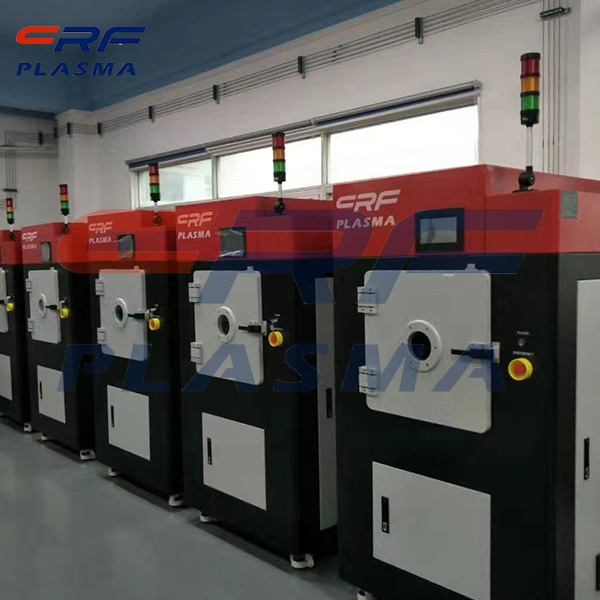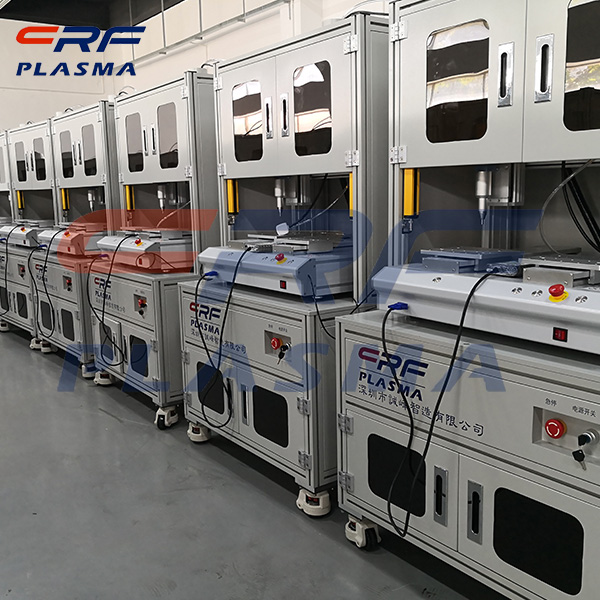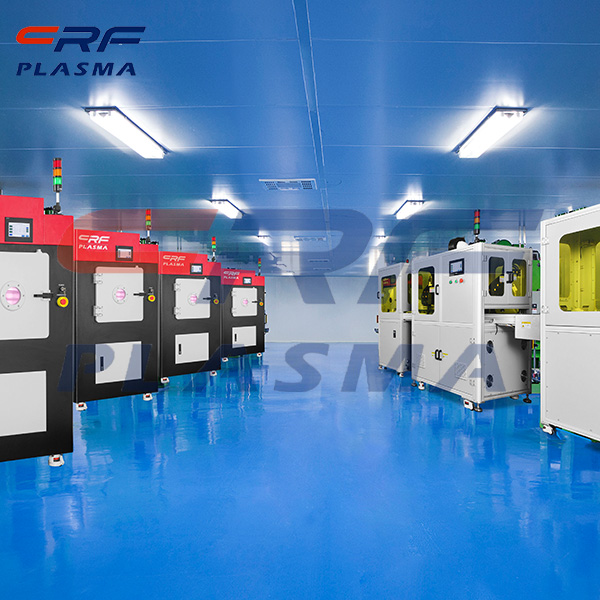
Welcome to Shenzhen Sing Fung Intelligent Manufacturing Co., Ltd.
E-mail:shaobo@sfi-crf.com
How does a plasma become a high-energy electron under the action of an electric field
- Categories:Technical Support
- Author:plasma cleaning machine-surface treatment equipment-CRF plasma machine-Sing Fung Intelligent Manufacturing
- Origin:
- Time of issue:2020-08-12
- Views:
(Summary description)Plasma surface treatment is a low temperature plasma is a low pressure discharge (glow, corona, high frequency and microwave, etc.) produced by ionized gas, under the action of an electric field, free electrons in the gas from the electric field energy to become high energy electrons. These high-energy electrons collide with gas molecules, atoms, if the electronic energy is greater than the atoms or molecules of the excitation energy can produce molecules or atoms excited free radicals, ion and radiation, with different energy by ion bombardment or injection of polymer surface, produce off key or the introduction of functional groups, make surface activity to achieve the purpose of modification. Plasma surface activation: Under the action of plasma, some active atoms, free radicals and unsaturated bonds appear on the surface of refractory plastics, and these active groups will react with the active particles in the plasma to form new active groups. However, materials with active groups will be affected by the action of oxygen or the movement of molecular segments, making the surface active groups disappear. In the surface modification of materials by plasma, due to the effect of active particles on surface molecules in plasma, the surface molecular chains are broken to generate new active groups such as free radicals and double bonds, and then surface crosslinking and grafting reactions occur. Reactive plasma means that the active particles in the plasma can chemically react with the surface of the refractory material, so that a large number of polar groups are introduced to make the surface of the material turn from non-polar to polar, the surface tension is increased, and the adhesiveness is enhanced. In addition, under the high speed impact of plasma, molecular chains on the surface of refractory materials break and cross link, which increases the relative molecular mass of surface molecules, improves the weak boundary layer condition, and also plays a positive role in improving the surface adhesion performance. Reactive plasma active gases mainly include 02, H2, NH3, C02, H20, S02, H√H20, air, glycerol vapor and ethanol vapor.
How does a plasma become a high-energy electron under the action of an electric field
(Summary description)Plasma surface treatment is a low temperature plasma is a low pressure discharge (glow, corona, high frequency and microwave, etc.) produced by ionized gas, under the action of an electric field, free electrons in the gas from the electric field energy to become high energy electrons.
These high-energy electrons collide with gas molecules, atoms, if the electronic energy is greater than the atoms or molecules of the excitation energy can produce molecules or atoms excited free radicals, ion and radiation, with different energy by ion bombardment or injection of polymer surface, produce off key or the introduction of functional groups, make surface activity to achieve the purpose of modification.
Plasma surface activation:
Under the action of plasma, some active atoms, free radicals and unsaturated bonds appear on the surface of refractory plastics, and these active groups will react with the active particles in the plasma to form new active groups. However, materials with active groups will be affected by the action of oxygen or the movement of molecular segments, making the surface active groups disappear.
In the surface modification of materials by plasma, due to the effect of active particles on surface molecules in plasma, the surface molecular chains are broken to generate new active groups such as free radicals and double bonds, and then surface crosslinking and grafting reactions occur.
Reactive plasma means that the active particles in the plasma can chemically react with the surface of the refractory material, so that a large number of polar groups are introduced to make the surface of the material turn from non-polar to polar, the surface tension is increased, and the adhesiveness is enhanced.
In addition, under the high speed impact of plasma, molecular chains on the surface of refractory materials break and cross link, which increases the relative molecular mass of surface molecules, improves the weak boundary layer condition, and also plays a positive role in improving the surface adhesion performance.
Reactive plasma active gases mainly include 02, H2, NH3, C02, H20, S02, H√H20, air, glycerol vapor and ethanol vapor.
- Categories:Technical Support
- Author:plasma cleaning machine-surface treatment equipment-CRF plasma machine-Sing Fung Intelligent Manufacturing
- Origin:
- Time of issue:2020-08-12 09:58
- Views:
How does a plasma become a high-energy electron under the action of an electric field:
Plasma surface treatment is a low temperature plasma is a low pressure discharge (glow, corona, high frequency and microwave, etc.) produced by ionized gas, under the action of an electric field, free electrons in the gas from the electric field energy to become high energy electrons.
These high-energy electrons collide with gas molecules, atoms, if the electronic energy is greater than the atoms or molecules of the excitation energy can produce molecules or atoms excited free radicals, ion and radiation, with different energy by ion bombardment or injection of polymer surface, produce off key or the introduction of functional groups, make surface activity to achieve the purpose of modification.
Under the action of plasma, some active atoms, free radicals and unsaturated bonds appear on the surface of refractory plastics, and these active groups will react with the active particles in the plasma to form new active groups. However, materials with active groups will be affected by the action of oxygen or the movement of molecular segments, making the surface active groups disappear.
In the surface modification of materials by plasma, due to the effect of active particles on surface molecules in plasma, the surface molecular chains are broken to generate new active groups such as free radicals and double bonds, and then surface crosslinking and grafting reactions occur.
Reactive plasma means that the active particles in the plasma can chemically react with the surface of the refractory material, so that a large number of polar groups are introduced to make the surface of the material turn from non-polar to polar, the surface tension is increased, and the adhesiveness is enhanced.
In addition, under the high speed impact of plasma, molecular chains on the surface of refractory materials break and cross link, which increases the relative molecular mass of surface molecules, improves the weak boundary layer condition, and also plays a positive role in improving the surface adhesion performance.
Reactive plasma active gases mainly include 02, H2, NH3, C02, H20, S02, H√H20, air, glycerol vapor and ethanol vapor.

Scan the QR code to read on your phone

TEL:0755-3367 3020 / 0755-3367 3019

E-mail:sales-sfi@sfi-crf.com

ADD:Mabao Industrial Zone, Huangpu, Baoan District, Shenzhen
















